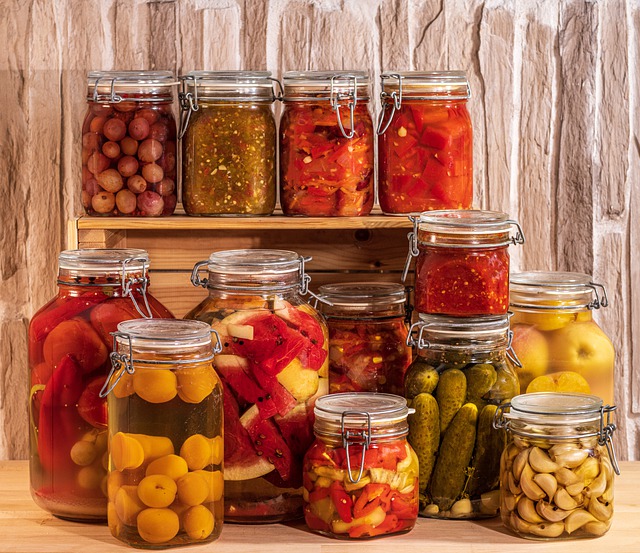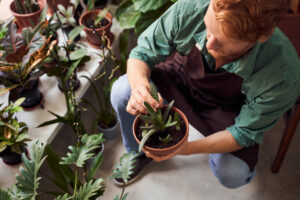In an era where farm-to-table practices and sustainable living are gaining momentum, preserving the harvest has become an art that not only extends the life of fresh produce but also connects us to traditional food preservation techniques. One such time-honored practice that’s making a strong comeback is pickling garden vegetables. This trend is more than just a passing fad; it’s a culinary journey that celebrates flavor, nutrition, and resourcefulness.
The Revival of a Time-Honored Tradition
Pickling is a preservation technique that dates back thousands of years, originating as a way to store perishable foods without the need for refrigeration. While advancements in food preservation have come a long way, the allure of pickling remains strong. Today, pickling is not just about preservation; it’s about flavor enhancement, experimentation, and embracing the vibrant world of homegrown goodness.
Connecting with the Harvest
Preserving the yield through pickling is more than a practical solution; it’s a way to connect with the harvest on a deeper level. By taking the time to select, prepare, and pickle garden vegetables, individuals can gain a profound appreciation for the seasonal cycles of nature and the effort that goes into producing the food we eat. Pickling encourages us to slow down, immerse ourselves in the present moment, and honor the bounties of each growing season.
Flavor Explosion
Pickling vegetables doesn’t merely maintain their freshness; it transforms them into flavor bombs that can elevate any meal. The pickling process involves immersing vegetables in a brine of vinegar, water, salt, and spices. Over time, the vegetables absorb these flavors, resulting in a unique combination of tanginess, sweetness, and spiciness. Whether you’re pickling classic cucumbers, experimenting with radishes, or venturing into more exotic options like pickled watermelon rinds, the possibilities are endless.
Health Benefits of Pickled Vegetables
Beyond their incredible taste, pickled vegetables offer various health benefits. Fermented foods like pickles are rich in probiotics, which promote gut health and aid digestion. Additionally, the fermentation process can increase the bioavailability of certain nutrients, making them easier for our bodies to absorb. Pickled vegetables are also low in calories and can be a tasty way to incorporate more vegetables into your diet.
Embracing Sustainability
The resurgence of pickling aligns perfectly with the sustainability movement. By preserving surplus produce through pickling, we can reduce food waste and make the most of what we grow. Furthermore, the reliance on simple, natural ingredients in pickling aligns with the desire to minimize the use of additives and artificial preservatives in our diets.

Getting Started with Pickling
If you’re ready to jump on the pickling bandwagon, here’s a simple guide to get you started:
- Choose Your Vegetables: Opt for fresh, firm vegetables from your garden or local market. Cucumbers, carrots, beets, onions, and cauliflower are popular choices.
- Prepare a Brine: Create a brine by combining water, vinegar, salt, and spices. The proportions can vary based on your taste preferences and the volume of vegetables you’re pickling.
- Add Flavor: Experiment with different spices and herbs to infuse unique flavors into your pickles. Dill, garlic, red pepper flakes, and mustard seeds are common additions.
- Pack and Seal: Pack the vegetables tightly into sterilized glass jars and pour the brine over them. Seal the jars tightly and let them sit in a cool, dark place for the flavors to develop.
- Patience is Key: The pickling process takes time. Depending on the vegetables and the level of tanginess you desire, your pickles could be ready in a few days to a few weeks.
Creative Pickling Recipes
- Classic Dill Pickles: Crisp cucumbers soaked in a brine of vinegar, dill, garlic, and spices. These timeless pickles are perfect for snacking or adding to burgers and sandwiches.
- Spicy Pickled Carrots: Transform humble carrots into a spicy delight by pickling them with red pepper flakes, ginger, and garlic. These fiery pickles add a kick to salads and grain bowls.
- Kimchi: Dive into the world of Korean cuisine by making your own kimchi. This fermented delight features Napa cabbage, radishes, and a fiery blend of chili, garlic, and ginger. Enjoy it as a side dish or incorporate it into stir-fries.
- Pickled Green Beans: Also known as “dilly beans,” these tangy treats are made by pickling fresh green beans with dill, garlic, and a touch of heat from red pepper flakes. They’re a crunchy addition to any relish tray.
The trend of pickling garden vegetables is more than just a culinary fad; it’s a celebration of tradition, flavor, and sustainability. As we strive to connect with our food sources and reduce our ecological footprint, pickling offers a delicious and resourceful way to preserve the yield of our gardens. So, whether you’re a seasoned gardener or someone with a few pots on your balcony, grab a jar, some fresh produce, and embark on a pickling journey that reconnects you with the earth’s bounty.
-
 Cardoon – Porto Spineless Seedling 6 pack$30.00
Cardoon – Porto Spineless Seedling 6 pack$30.00 -
 Artichokes – Green Globe Seedlings 6 pack$30.00
Artichokes – Green Globe Seedlings 6 pack$30.00 -
 Heritage Raspberry$66.99
Heritage Raspberry$66.99 -
 Blueberry Glaze® Blueberry$71.99
Blueberry Glaze® Blueberry$71.99 -
 Shadblow Serviceberry$80.99
Shadblow Serviceberry$80.99 -
 Adams American Elder$72.99
Adams American Elder$72.99 -
 Italian Oregano, 4 Pack in 4″ Pot$39.99
Italian Oregano, 4 Pack in 4″ Pot$39.99
More Recent Posts
Selling Plants Online has Never Been Easier
Going back to the pandemic, the consumer horticulture industry gained over 18 million new gardeners and plant parents. This is a significant amount of new interest in the wonderful world of plants. Garden centers, growers and home hobbyists all had to make this hard pivot to online sales in 2020. Since then, many garden retailers…
The Future of Consumer Horticulture
When it comes to consumer horticulture, there are countless factors that can contribute to its popularity and growth. From new consumer trends and innovative marketing strategies to technological advancements and consumer confidence, there is no shortage of potential factors at play. One company that is helping to drive consumer horticulture into the future is Ship…
Ship My Plants VS.
For Plant People, By Plant People Ship My Plants is the go-to marketplace for plant enthusiasts. Cultivated by a longtime love of horticulture, our multi-vendor platform offers a unique solution to buy and sell plants online. Unified Plant Data Backed by the industry’s leading plant database, Ship My Plants provides unified information across 30,000+ plant…






